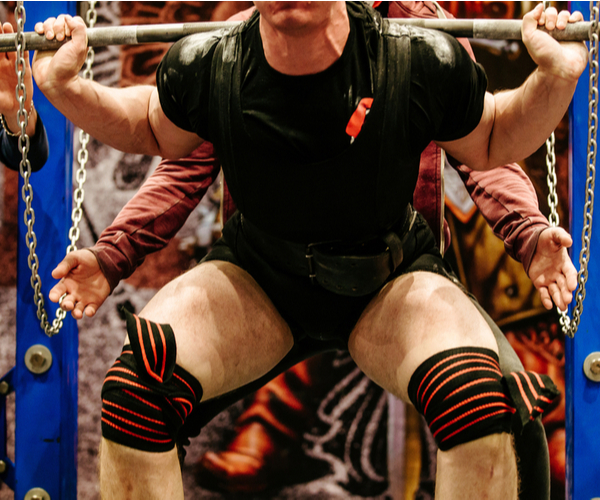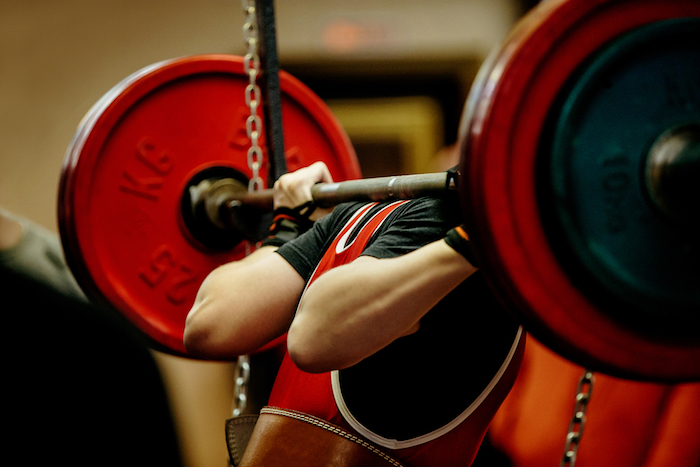Where do the upper limits for strength and size exist?
We’re in an interesting time in the world of fitness and strength sports. The popularity of lifting and competing in strength sports continues to grow and we’re seeing more and more athletes accomplish feats of strength that were thought to be impossible just years ago.
Why is this though? Well, as strength sports continue to grow in popularity, so does the talent pool of both athletes and coaches — and with all this comes an increase in research, like that of the field of muscles fibers.
https://www.instagram.com/p/ByputR1FjVg/
In a recent case study published out of California State University Fullerton’s College of Health & Social Sciences, authors assessed muscle fiber type and morphology (how the shape changes over time) in a middle-aged elite powerlifter using anabolic steroids. The purpose of this case study was to assess how muscle fibers adapt and change to heavy resistance training with the use of anabolic steroids over the course of an athlete’s career.
This case study has opened up a ton of new questions and suggestions as to where research should head next. For example, this case study found a fast-twitch muscle fiber in the subject that was over 20% larger than the normal muscle fiber recorded in a rhinoceros — wait…what?
In fact, we found one fiber that was significantly larger than average (>2 standard deviations). – Dr. James Bagley

We know strength athletes possess an insane amount of fast twitch fibers from this study performed on elite weightlifters last year, but finding a muscle fiber larger than what a rhinoceros possesses is astounding. For this case study, authors analyzed 250 individual muscle fibers pulled from the elite powerlifter’s resting vastus lateralis (outer quad muscle).
Powerlifter’s Stats Worth Knowing
- Age: 40 years
- 30+ years of resistance training
- 10+ years of anabolic-androgenic steroid use
- 4+ years of consistent anabolic-androgenic steroid use
- Max squat 493kg, bench press 387kg, and deadlift 347kg
Upon their analysis of the elite powerlifter’s muscle fibers, the authors noted some fascinating findings and compared what they observed to current literature on muscle fibers.

The powerlifter’s muscle fiber breakdown was as follows:
- 9% Type I Fiber (slow twitch) — Play a large role in endurance based activities
- 12% Tyle I/IIa Fiber (slow-fast twitch hybrid) — Play a role in endurance/strength/power based activities
- 79% Type IIa Fiber (fast twitch) — Play a large role in strength/power based activities
The recorded 79% of type IIa muscle fibers is remarkable. For context, this is amongst the highest percentages of type IIa fibers ever documented in research and is roughly 2x the amount often seen in competitive powerlifters.
In addition to possessing some of literature’s highest ever recorded type IIa fast twitch muscle fiber percentages, the elite powerlifter’s muscle fiber’s cross sectional area was actually similar on average to what’s normally observed in healthy men, but his fibers possessed a higher myonuclear domain size (which is used to help predict a muscle fiber’s oxidative capacity). This observation of an increased in myonuclear domain suggests that the elite powerlifter has roughly >2x the amount of myonuclei (per volume) that an untrained, healthy male possesses.
With 2x+the amount of myonuclei per volume, this implies that the elite powerlifter’s muscle fibers have a much greater ability and ceiling for growth and recovery.

An Interview With One of the Authors
To gain a better understanding of this case study and where research is heading next, I reached out to Dr. James Bagley, one of authors on the study and Assistant Professor of Kinesiology and Director of the Muscle Physiology Lab at SF State.
BarBend: What was the most surprising part about this case study?
Bagley: This case study gives us a snapshot of the upper-limits of human muscle physiology related to hypertrophy and strength. While amateur powerlifter’s and bodybuilder’s muscles have been studied and profiled over the past decades, this is the first study that we know of, that was able to get a muscle fiber type and microscope images of single fibers from a truly elite powerlifter (combined max squat, deadlift, and bench >2,600 lbs).
That said, some results were expected. For example, this athlete had 79% pure fast twitch muscle fibers (also called Myosin Heavy Chain (MHC IIa) fibers). This is a lot more than average adults, but is comparable to the elite Olympic weightlifters that our lab has studied. Also, we found that his average “myonuclear domain size” (area that each myonuclei controls) was smaller than average. This was also expected, as this athlete likely has a better growth and repair response due to extensive resistance training, and likely anabolic steroid use.
However, we also found some very unexpected results. This athlete’s fibers were, on average, the same size or smaller than average adults. This suggests he has more total fibers per muscle vs. average adults to account for his larger total muscle mass. But, some of his fibers were not so normal in size.
In fact, we found one fiber that was significantly larger than average (>2 standard deviations). To put this in context, it was over 20% larger than an average rhinoceros fiber!
This is the largest human fiber our labs have ever seen. We don’t know why some fibers are insanely huge though, it could be training, performance enhancing drugs, genetics, or diet. Or, most likely a combination of these factors.
BarBend: Where do you hope research heads next following this study?
Bagley: For the past 50+ years, muscle physiologists have studied “recreationally active young people”. Why? Because most research is done at universities. This is where we recruit subjects from, and most people around colleges are “recreationally active young people”.
It is actually really difficult to get subjects for research studies, especially elite athletes. However, I think athletes and coaches are becoming more open to the idea of participating in muscle research. I think they are realizing that this data can help them, their sport, and the scientific community. I hope that our research on this elite powerlifter will spark more interest in both the sport and science worlds to collaborate.
We are just barely scratching the surface of understating human muscle physiology potential, but I hope this study can add another piece to the puzzle.
BarBend: What are the big takeaways from this study that a reader can learn?
Bagley: First, no surprise, long-term (decades) of resistance exercise and anabolic steroid use can make your really big and really strong. What we showed though, is more detailed information on what is going on at the cellular and molecular levels: compared to average adults this elite powerlifter had:
- 1) a greater repair and growth capacity
- 2) a lot more fast-twitch fibers
- 3) some very very large fibers (mixed in with mostly average sized fibers)
BarBend: What makes this study so unique compared to what’s been done before with muscle fiber research?
Bagley: We were very lucky to get a muscle biopsy from an elite male powerlifter with a 15-year history of anabolic steroid use. While this one sample provides only a snapshot of this athlete’s physiology — it is very rare to get data like this from elite strength athletes.
Most athlete research in the past has been conducted on endurance athletes. Why? Because most researchers back in the day were endurance athletes themselves!
However, now we have a lot of strength/power and concurrently trained “athlete scientists”. I think this, along with the growing popularity of weightlifting and powerlifting makes the right time to get good muscle fiber data out on these populations. As I said before, this data shows a small piece to a larger puzzle, with the aims of understanding muscle growth and performance.
It is a great time to be in the field of muscle physiology, — and I’m really excited to see where we will be in 10 years!
Feature image from Shams F Amir / sportpoint / Shutterstock